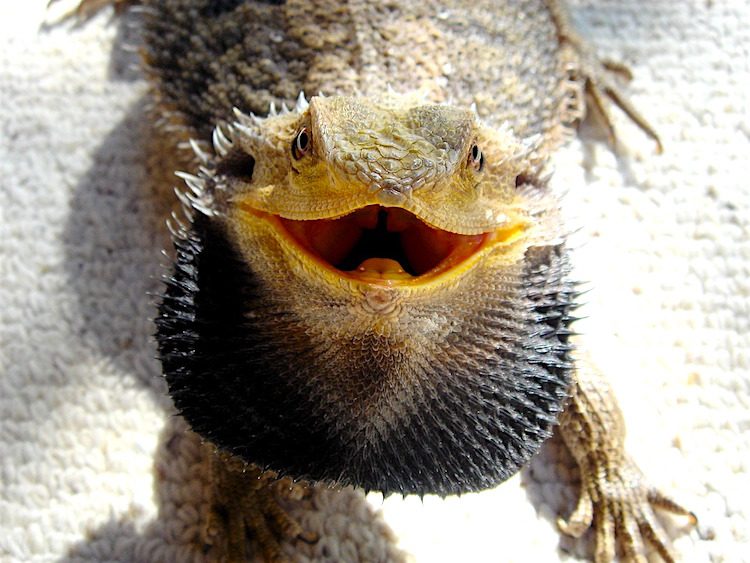
Bearded dragons are commonly kept pet lizards, but their behavior can be a lot more colorful than you might expect.
Several bearded dragon behaviors are simply ways of communicating with others of their species, as well as people and perceived enemies.
Most of their behaviors are meant to convey messages of dominance, interest in a mate or their emotional state. Others are the result of environmental factors.
Here are 9 fascinating body postures of bearded dragons:
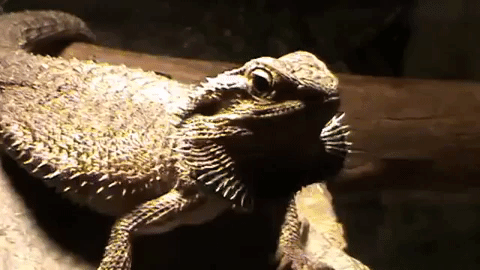
1. Puffed-Out Beard/Black Beard
The namesake trait of the bearded dragon is perhaps its most startling, especially for someone who hasn’t seen one of these animals before.
The beard is essentially a large throat pouch that these lizards can stretch outward, and its shape resembles that of a full human beard.
The scales on the beard can turn pitch black — in stark contrast to the usual lighter colors. A bearded dragon may hold their mouth agape and puff up their body to add bigger effect to this threat display. It’s a clear warning to any would-be foes to stay away or face the consequences.
However, a blackened beard can also signify that the lizard has something else on their mind. If in sight of a female, a male will blacken his beard and head bob to let her know he’s interested in mating with her.
Both male and female dragons can do this, but generally speaking, a male’s display is much more intense.
A darkened beard can also be a sign that a bearded dragon is afraid of something in the immediate environment. This could be something as innocent as a stuffed animal or a hat. Just remove the offending item from the lizard’s view to reduce stress and calm them down.
Occasionally, a black beard is a sign that a bearded dragon isn’t feeling well.
If lethargy and any loss of appetite are noticed along with this behavior, take the animal to the veterinarian at the soonest opportunity. It could mean there is a serious health issue going on.
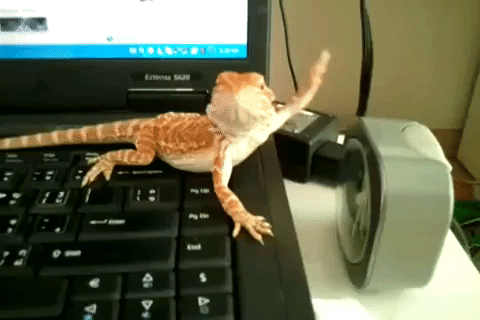
2. The Wave
Bearded dragons sometimes do an arm wave, both at other dragons and at their humans.
The meaning behind these little waves can be described in 2 ways:
- It’s a way of saying that they acknowledge your or another dragon’s presence — a simple “I’m here, and you’re there” sort of statement.
- Or it’s a signal of submission, usually when another dragon is around. This is their way of communicating that they don’t want trouble. A female may also do this to submit to a male she’s decided to mate with.
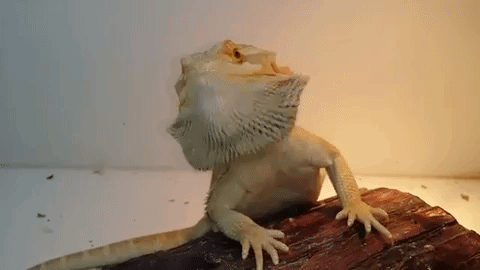
3. The Head Bob
The head bob is typical of male dragons, usually accompanied by a blackened beard.
They do this to impress females during breeding season. It’s also common for bearded dragons to do head bobs in territorial disputes and dominance displays.
Head bobbing can be so pronounced that dragons may also incorporate a push-up movement for an extra bit of show.
It’s amazing how riled up these lizards can become during a head-bobbing episode. If you’ve ever held a bearded dragon while they’re doing this, you can feel their increased heart rate.
If you notice that your bearded dragon is performing head bobbing frantically or scrambling around like crazy, you can wrap them in a towel and take them to a different room that is neutral territory. Sometimes this helps calm them down while they’re experiencing their hormonal periods during the year.
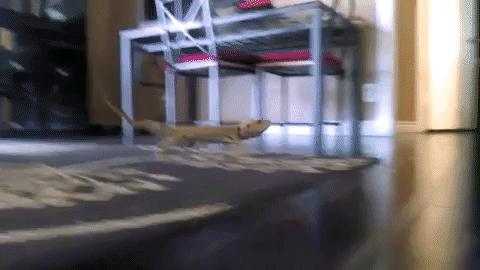
4. Vertical Tail Curl
If you’ve ever watched a bearded dragon run, you’ll notice how they hold their tails curled backward like a scorpion. Most lizards have a horizontal curl, whereas these Aussie lizards have a vertical curl.
This is a general trait of alertness and possibly dominance.
Most dragons carry their tails like this when walking or running.
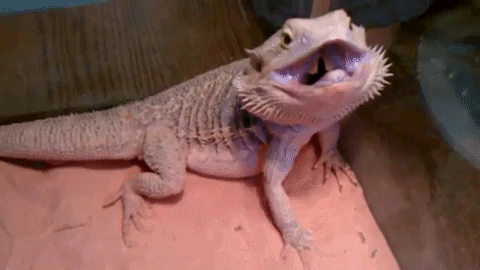
5. Gaping
A basking bearded dragon will often open their mouth while basking under a heat source.
Gaping is what they do when they’ve reached optimum temperature, and by opening their mouth they are able to release excess heat.
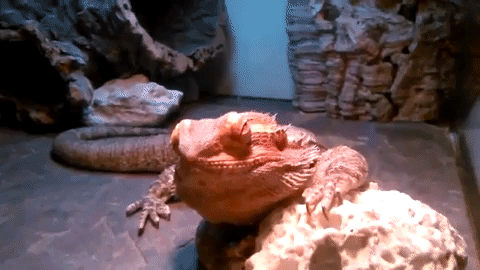
6. Eye Bulging
One of the weirdest things you’ll see a bearded dragon do is bulging out their eyes.
Why they do it is a mystery, but it likely has to do with stretching the skin around the eyelids during or before shedding.
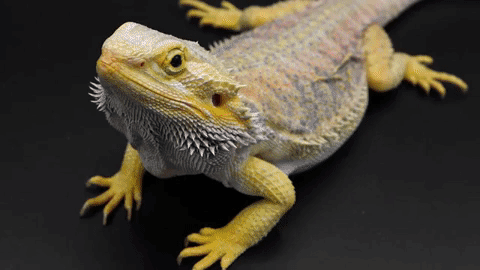
7. Changing Skin Color
Color changes occur most noticeably when the bearded dragon is under a heat source or under natural sunlight.
Some of the bumpy scales, along with faint tiger stripes, will darken under the sun.
Some dragons with more striking color patterns may become brighter, too. By turning darker, these lizards can maximize the heat that their bodies absorb.
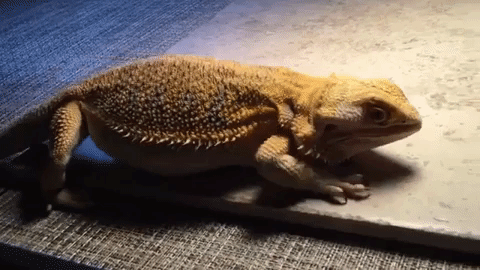
8. “Pancaking”
Pancaking is when a bearded dragon flattens out their body while basking. This maximizes surface area for absorbing heat.
The shape resembles a strange sort of pancake with lizard features attached.
Undoubtedly, this term was coined by an avid keeper.
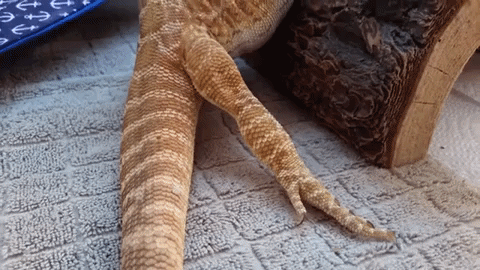
9. “Sexy Leg”
Some bearded dragon keepers use this phrase to describe the often lazy but perhaps suggestive leg positions of these lizards.
Usually displayed when basking, the “sexy leg” is left dangling or stretched out to keep us all on our feet for photo ops.
Final Thoughts on Body Postures of Bearded Dragons
Bearded dragons are inquisitive and surprisingly alert. They’ve even shown that they can learn through imitation.
By using communicative body language, they hint at an intelligence without uttering a word.
With most of these fascinating body postures of bearded dragons now recorded on video and thoroughly decoded, their human keepers can understand most of what they’re trying to say.


